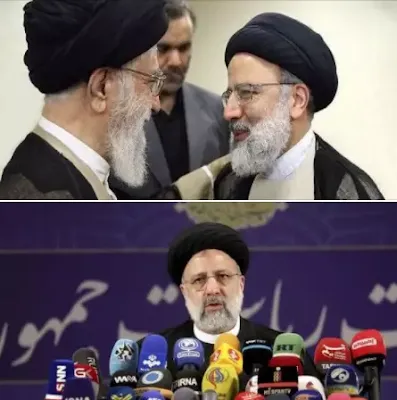Let's take a look at some of the powers of the Iranian president
Iran's 13th presidential election has taken place. Iran's constitutional rule is that no one can be president for more than two terms. That is why incumbent President Hassan Rouhani could not run in the elections for the third time. Although there were a total of 08 presidential candidates at the beginning of this year's election, three of them withdrew at the very last moment of the election. As a result, the last fight was between four people. The most talked-about candidate is Ibrahim Raisi, a former Iranian judge and current chief justice. Raisi also ran in the 2016 presidential election but could not get along with Hassan Rouhani.
 |
| Let's take a look at some of the powers of the Iranian president |
Chief Justice Ibrahim Raisi's main rival is Naser Hemati, a former governor of Iran's central bank and a popular journalist on state television. Although Nasser Hemati is the main rival, Ibrahim Raisi is going to sit in the Musnad of the Iranian president for some important reasons.
The first reason is that Ayatollah Khomeini, the country's supreme religious leader, appointed Ibrahim Raisi as the head of Iran's judiciary in 2019. The second reason is that the influential Revolutionary Guards of Iran also have the support of the presidential candidate. Third, voter turnout in this year's election was much lower than in previous elections. That is why Ibrahim Raisi is going to be the President of Iran with the support of religious leader Ayatollah Khomeini and the Iranian Revolutionary Guards.
The country's top religious leader has been the most powerful man since the 1979 Iranian revolution. The presidency is Iran's second most powerful However, the country's constitution has some restrictions on the power of the president Since the president has to go under the Supreme Leader.
Let's take a look at some of the powers of the Iranian president;
01. The president plays the role of the chief officer of the bureaucracy.
02. The president also has a role to play in shaping foreign policy from Iran's trade policy.
03. The president is basically the head of government. He determined the economic policy of the country
04. In one of my previous posts, I discussed the strange system of government in Afghanistan. The president of Afghanistan is accompanied by two vice presidents. Many were surprised to see two vice presidents together. Even more surprising is the fact that the Iranian president has a total of eight vice presidents, not just one or two. The President, in consultation with all these Vice Presidents, sets out various important policies of the State.
05. The cabinet is formed under the president. The total number of cabinet members is 22.
If elected, Ibrahim Raisi will be the eighth president of Iran. He will take over from incumbent President Hassan Rouhani in August. Raisi is a Conservative politician. We often hear a term called Conservatism or Conservatism. Francis-Renেনে de was the first to use this political term in 1817 after the French Revolution. Simply put, conservatism means maintaining a long-standing tradition in society, upholding religious beliefs and laws, adhering to customs and traditions, and so on. It is basically the opposite of Liberalism or Liberalism.